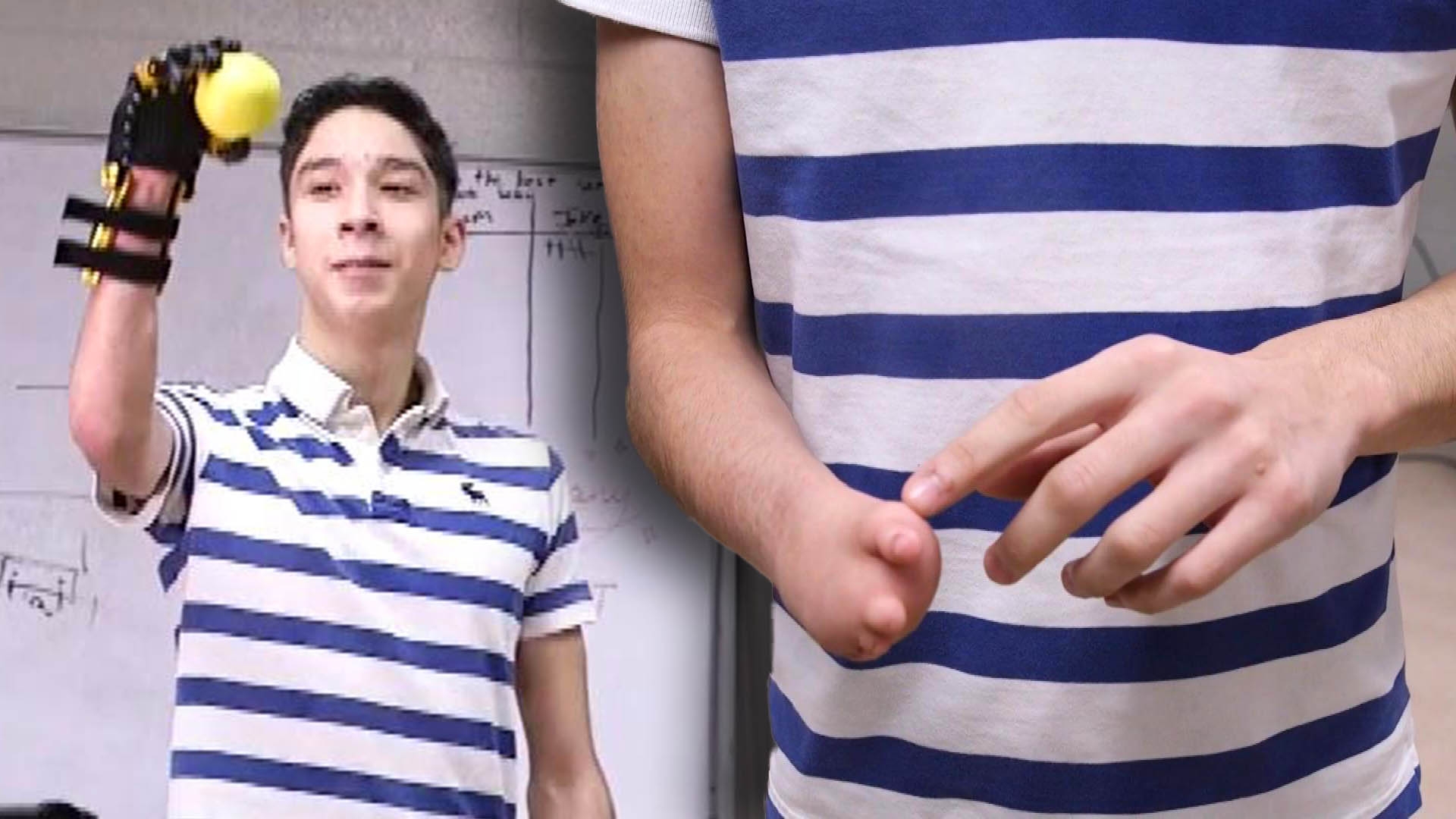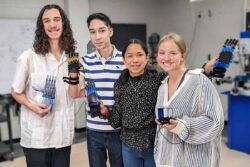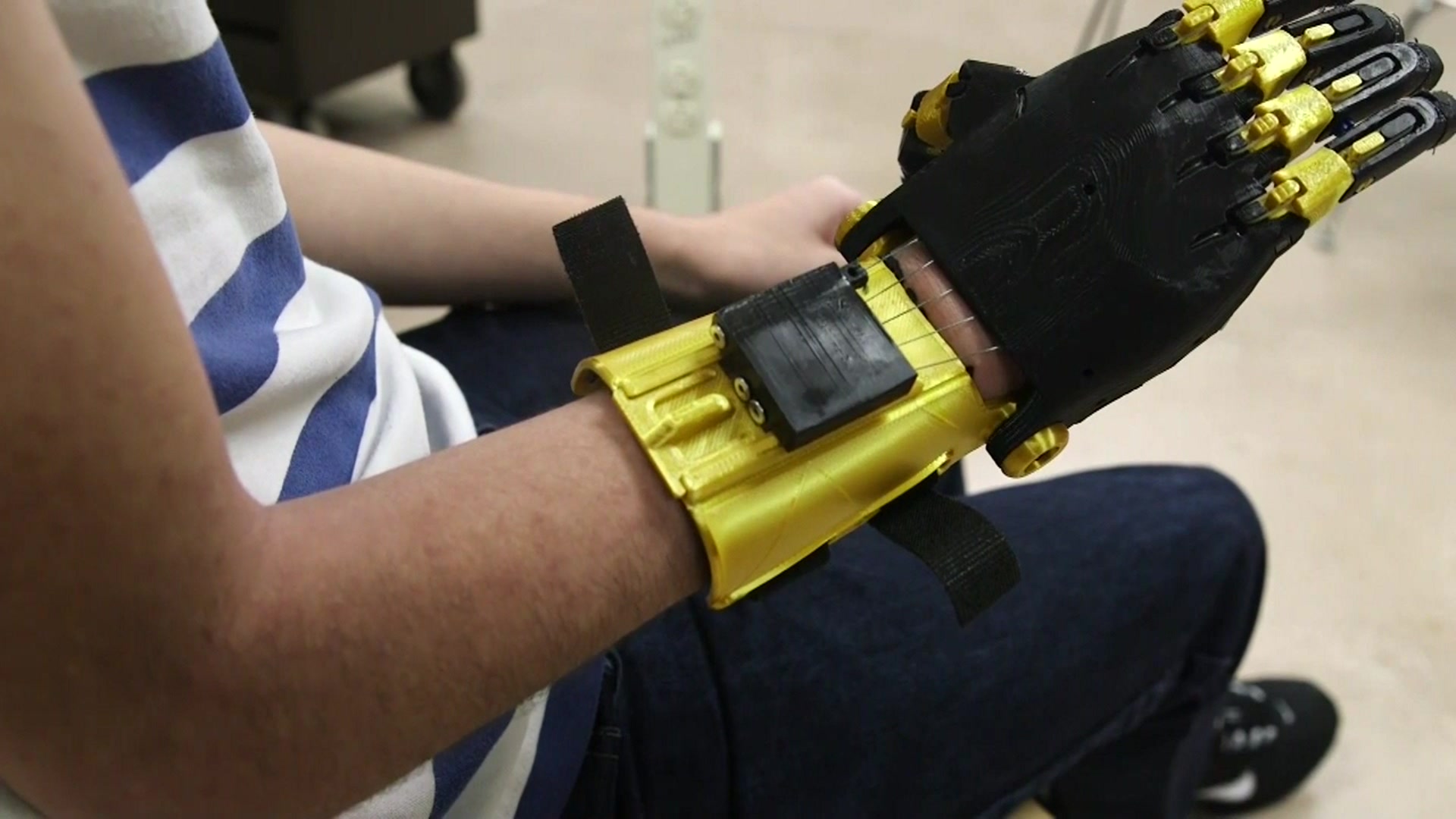
All his life Sergio Peralta dreamed of playing tag.
When he was born, Peralta said his right hand was not fully developed. Instead, tiny fingers grew at the end of his arm. He learned how to do everyday tasks – writing, eating, carrying books – with one hand. Over the years, the 15-year-old lost hope that that would change.
But after that Peralta enrolled in a new high school in August where engineering students built him a prosthetic hand — a gesture the sophomore said changed his life. Now Peralta can not only throw a ball, but also carry water bottles, cups and food with his right hand.
“I feel happier and more excited,” Peralta told the Washington Post. “I wanted to do a lot with my right hand. Now I can do more.”
After moving from Madison, Tenn. to nearby Hendersonville last summer, Peralta said he tucked his right hand up his sleeve at Hendersonville High. Ever since he was a child, Peralta said, classmates had asked for his hand, and some had teased him.
A few weeks into the school year, computer science teacher Jeff Wilkins noticed that Peralta was the only student who moved his mouse to the left side of his keyboard. Then he saw that Peralta had no right hand. Peralta said he’s never tried prosthetics because he’s been comfortable with most activities with his left hand.

New prostheses go beyond the functional, so that people can “feel” again
Wilkins, 43, started an engineering program in Hendersonville in 2018 so students could take on projects to improve their community. He attempted to build a wheelchair for a paralyzed student in Indiana around 2010, but said he didn’t have the equipment and skills to complete it. He still regretted that.
After learning of Peralta’s hand, Wilkins remembered a video he had seen years before of Enabling the Future, a volunteer group doing this makes 3D printed prosthetic hands.
When Wilkins approached Peralta and his mother about a prosthetic hand, they showed interest but knew building one could be a challenge a high school class. In early November, Wilkins secretly commissioned three of his students to take on the project. They bought 3D printing gear on Amazon and found a model image of a prosthetic hand in design software.
“I didn’t want to give him hope,” Wilkins said. “I’d rather under-promise and over-deliver on something like this than over-promise and under-deliver.”

They used polylactic acid, a common plastic filament material in 3D printing that’s also used to make electronic devices. as the main tissue of the hand. They used thermoplastic polyurethanes, a resilient plastic commonly found in phone and laptop cases, to allow fingers to flex and squeeze objects. They added fishing line and Velcro so Peralta could easily strap his hand to his forearm.
The group did so while keeping their progress secret. They measured classmates’ hands to gauge Peralta’s ideal fit.
After the students had worked by hand for about a week, they used the school’s LulzBot 3D printer to do it create a prototype. The students said they worried Peralta wouldn’t like or use the hand, but soon When he put on the prototype in mid-November, he could flex his fingers.
Peralta said he was stunned. Then Wilkins threw him to the ground a yellow rubber ball. While Peralta failed to catch the first few throws, the students screamed in excitement when he finally caught the ball.
“I was just so excited,” Peralta said.
Leslie Jaramillo, a senior who helped make the hand, said she didn’t expect the class project to change another student’s life.
“It just gave me another way to help the community,” said Jaramillo, 17. “Even through using skills I’m learning in school.”

In the weeks that followed, Peralta worked with Jaramillo and other engineering students as they upgraded three-handed models. At the beginning of December, Peralta carried the last device home – and the students mastered their task.
Peralta said he only removes the prosthetic hand when he’s asleep. He uses them to pick up cups and water bottles, he says, and wants to learn to write with them.
While Peralta and his classmates didn’t come into the school year with much engineering experience, they plan to study the subject in college and hope to work on it other influential products.
“It was cool to see [the hand] kind of a part of who he is now,” Wilkins said of Peralta. “I want to teach them that products don’t have to be about making money. It can be about helping someone else have a more fruitful life.”
Source : washingtonpost.com








